SILICA
Silica, also known as Crystalline Silica*, is a naturally-occurring mineral that is found in many materials and industrial processes.
Silica is one of the most common hazards on worksites.
*Chemical Name: Silicon dioxide; formula: SiO2
Silica, also known as Crystalline Silica*, is a naturally-occurring mineral that is found in many materials and industrial processes.
Silica is one of the most common hazards on worksites.
*Chemical Name: Silicon dioxide; formula: SiO2
Most silica is in the quartz form, so the term “quartz” is often used interchangeably with “silica".
For the remainder of this article, the health effects of silica will refer to quartz.
Most data on the hazardous effects of silica concerns quartz, but there is also an ample data on the hazardous effects of cristobalite and tridymite.
Less common forms of silica include:
• tridymite • cristobalite
Rarer forms of silica include:
• keatite • coesite • stishovite • moganite.
Most data on the hazardous effects of silica concerns quartz, but there is also an ample data on the hazardous effects of cristobalite and tridymite.
According to CAREX Canada 153,000 Ontarians are exposed to silica
in their workplaces.
The largest occupational groups affected by silica exposure are:

CONSTRUCTION

MINING

OIL and GAS

MANUFACTURING

AGRICULTURE
Other exposed occupations include iron foundry workers, and metal processing workers,
though it can occur in any workplace where silica is disturbed or processed.
Silica is naturally found in:
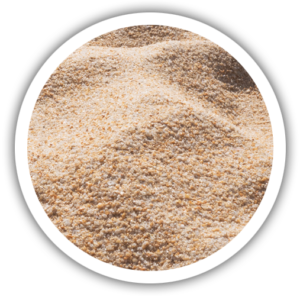
Sand

Crystals
(such as amethyst, chalcedony, citrine, onyx)
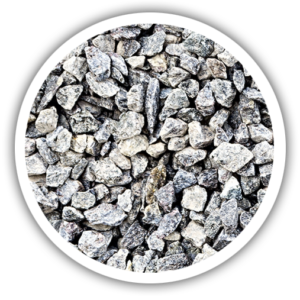
Stones
...and particularly in deposits of diatomite.
It is also found in a wide range of construction materials, such as:

Bricks / Concrete Blocks

Gravel / Stone / Rock
(or asphalt containing)

Concrete / Cement

Mortar

Glass

Artificial Stone
(e.g. Counter Tops)

Granite

Some Abrasives / Cleansers

Fill Dirt / Top Soil

Ceramics / Tiles

Some Types of Fibreglass
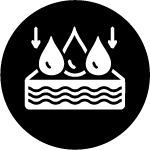
Fillers
(e.g., anti-caking agents, laboratory absorbents, paint, paper, etc.)
Silica-related diseases can occur from either short-term high exposures or long-term repeated exposures.
Silica damages the lung and causes scar tissue to form, which in turn causes the lung tissue to become thicker.
Inhaling silica dust can cause silicosis, a serious and irreversible lung disease.
It is possible to have silicosis without showing any symptoms at first.
The longer workers have been exposed to silica dust, the worse the symptoms will become.
As the disease progresses workers may show noticeable symptoms such as:
![]()
Shortness of breath
![]()
Severe Coughing
![]()
Body Weakness
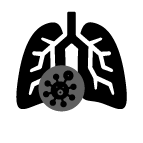
Silica exposure can also cause lung cancer.
2.5%
of lung cancers diagnosed in Ontario each year are caused by silica*.
That is approximately
200
lung cancer cases per year
* The Occupational Cancer Research Centre (OCRC) and Cancer Care Ontario (CCO)
Other diseases caused by silica exposure include:
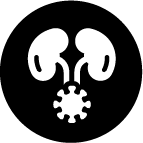
Chronic Kidney Disease

Rheumatoid Arthritis

Scleroderma
In addition, scientific literature has demonstrated that exposure to silica is positively associated with the development of:
• Idiopathic Pulmonary Fibrosis (IPF) • Chronic Obstructive Pulmonary Disease (COPD) • Esophageal Cancer • Sarcoidosis
among several other diseases.
* The Occupational Cancer Research Centre (OCRC) and Cancer Care Ontario (CCO)
In Ontario, the time weighted average limit (TWA) for respirable crystalline silica is 0.1 mg/m3, as defined by:
O. Reg. 490/09: Designated Substances.
R.R.O. 1990, Reg. 833: Control of Exposure to Biological or Chemical Agents
Ontario has not adopted the current ACGIH Threshold Limit Values (TLVs)*.
*ACGIH TLVs are health-based and evidence-based occupational exposure limits meant to protect most workers.
The ACGIH TLV for silica is currently 0.025 mg/m3, as respirable particulate matter.
Silica is the most common hazard on a work site.
Any activity that creates dust can expose workers to airborne silica.
Silica becomes hazardous when it is broken into fine particles and inhaled.
These fine silica dusts are known as Respirable Crystalline Silica (RCS).
Respirable crystalline silica is much smaller than ordinary sand and is small enough to penetrate into the gas-exchange region of the lungs (alveoli).
Respirable crystalline silica is made when materials that contain silica (like concrete and bricks) go through processes such as:

Sawing / Cutting

Drilling

Crushing
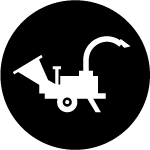
Chipping

Blasting

Grinding / Sanding / Dressing

Loading / Hauling / Dumping

Demolishing / Renovating

Sweeping / Blowing
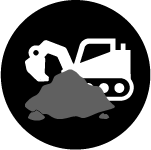
Tunneling / Excavating

Earth Moving
...or when the process involves the application of silica, such as:

Abrasive / Sand Blasting
Other industrial processes can lead to the generation of respirable crystalline silica, such as:
![]()
Foundry Work
![]()
Hydraulic Fracturing
![]()
Some Dental Processes
The best way to reduce the risk of exposure to silica dust is to eliminate the source of exposure.
If that is not possible, there are other risk controls that can be used.
If working in an industry or occupation where respirable crystalline silica can be generated, the following control measures may be needed:
![]()
Engineering Controls

Administrative Controls
![]()
Personal Protective Equipment (PPE)
These controls serve to:

PREVENT
silica dust from getting in the air

REMOVE
existing silica dust from the air

REDUCE
the likelihood of workers inhaling silica dust
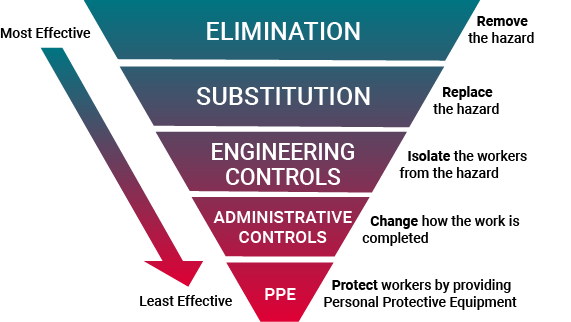
Learn more about each control method using the dynamic bars below:
Eliminate the hazard by changing the process to avoiding cutting, grinding, or drilling, etc. (e.g. improving concrete forms). This is the most effect control method.
Ask yourself:
Source and substitute a safer material (i.e. lower silica-containing products)
Ask yourself:
Making physical modifications to facilities, equipment, and processes such as enclosing the process; using a wet process, or using local exhaust ventilation can reduce exposure.
Ask yourself:
These involve changing work practices and work policies. Providing awareness tools and robust training programs, proper clean-up procedures, procedures for safe work; etc., can all limit the risk of silica dust exposure.
Ask yourself:
Using disposable protective clothing; respirator half-face respirator with a P100 cartridge, a full face with P100 cartridge, or full face with powered air-purifying respirator with P100 cartridge can all help reduce exposure...BUT REMEMBER: This is the least effective control. When used, there must always be at least one other control in place as well.
Ask yourself:
This infographic summarizes the content of this page and is a great resource for posting in the workplace or using as a handout for workers or at training sessions:
Learn more about Silica, the effects of exposure, and prevention methods using the following resources:
Note: Use the dots above to view all the resources.
The following resources were used in the preparation of this page:
“Silica Control ToolTM” (OHCOW, in partnership with B.C. Construction Safety Association (BCCSA) and the Canadian Centre for Occupational Health and Safety (CCOHS)): https://www.ohcow.on.ca/occupational-illness/silica-control-tool-pilot-program-ontario/
“The Silica Control Tool Pilot Project” (OHCOW video) https://www.ohcow.on.ca/posts/the-silica-control-tool-pilot-project/?utm_source=rss&utm_medium=rss&utm_campaign=the-silica-control-tool-pilot-project
“Occupational Lung Disease: Overview, Risk, Assessment, Diagnosis” (OHCOW slides) https://www.ohcow.on.ca/edit/files/occ-tober/2020/occupational_lung_disease_ohcow_october_series_2020.pdf
“Using Scientific Evidence to Drive Prevention and Compensation” (OHCOW slides) https://www.ohcow.on.ca/edit/files/occ-covid/mol_report_for_occ-tober_-_demers.pdf
“Practical Tools for Working on Occupational Cancer Cases: Case Studies of Lung Cancer” (OHCOW slides) https://www.ohcow.on.ca/edit/files/events/2019/carex_-_law_and_labour_webinar.pdf
Silica (Crystalline) Profile (CAREX Canada): https://www.carexcanada.ca/profile/silica_crystalline/
Silica, Quartz Fact Sheets (CCOHS (Canadian Centre for Occupational Health & Safety)): https://www.ccohs.ca/oshanswers/chemicals/chem_profiles/quartz_silica.html
Silica Dust, Crystalline, in the form of Quartz or Cristobalite Monograph (IARC (International Agency for Research on Cancer)): https://monographs.iarc.who.int/wp-content/uploads/2018/06/mono100C-14.pdf
Silica (Occupational Cancer Research Centre (OCRC)): https://www.occupationalcancer.ca/burden/current-burden/silica/
Workplace Crystalline Silica Exposure Causes 200 Lung Cancers Annually (Special Edition) (Cancer Care Ontario (CCO)): https://www.cancercareontario.ca/en/cancer-facts/workplace-crystalline-silica-exposure-causes-200-lung-cancers-annually)
Construction Exposure Profiles: Crystalline Silica (Occupational Cancer Research Centre (OCRC)): https://www.ohcow.on.ca/wp-content/uploads/2022/04/crystalline_silica_bctco.pdf
Crystalline Silica Burden of Occupational Cancer Fact Sheet for Construction (Occupational Cancer Research Centre (OCRC) and CAREX Canada): http://www.occupationalcancer.ca/wp-content/uploads/2020/01/Silica_Construction_Burden_FS_2019.pdf
Crystalline Silica Burden of Occupational Cancer Fact Sheet for Mining (Occupational Cancer Research Centre (OCRC) and CAREX Canada): http://ocrcnew.wpengine.com/wp-content/uploads/2017/03/FACT-SHEET-Silica-in-mining.pdf
Silica (Collaborative on Health and the Environment (CHE): Toxicant and Disease Database): https://www.healthandenvironment.org/our-work/toxicant-and-disease-database/?showcontaminant=2361
OEL Tool (OHCOW Tool link): https://www.ohcow.on.ca/oel-adjust-tool/